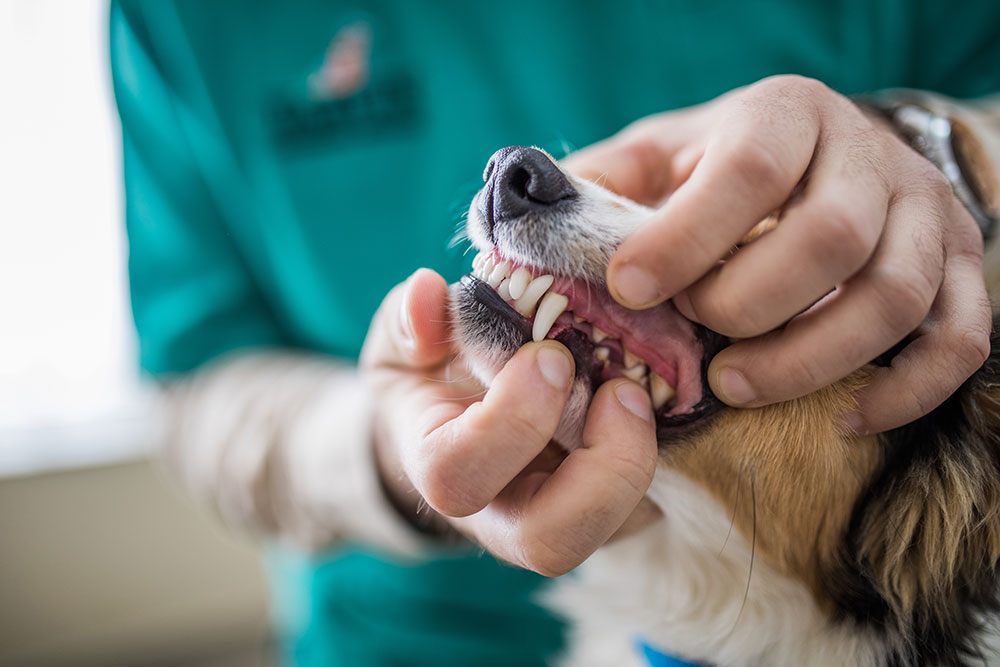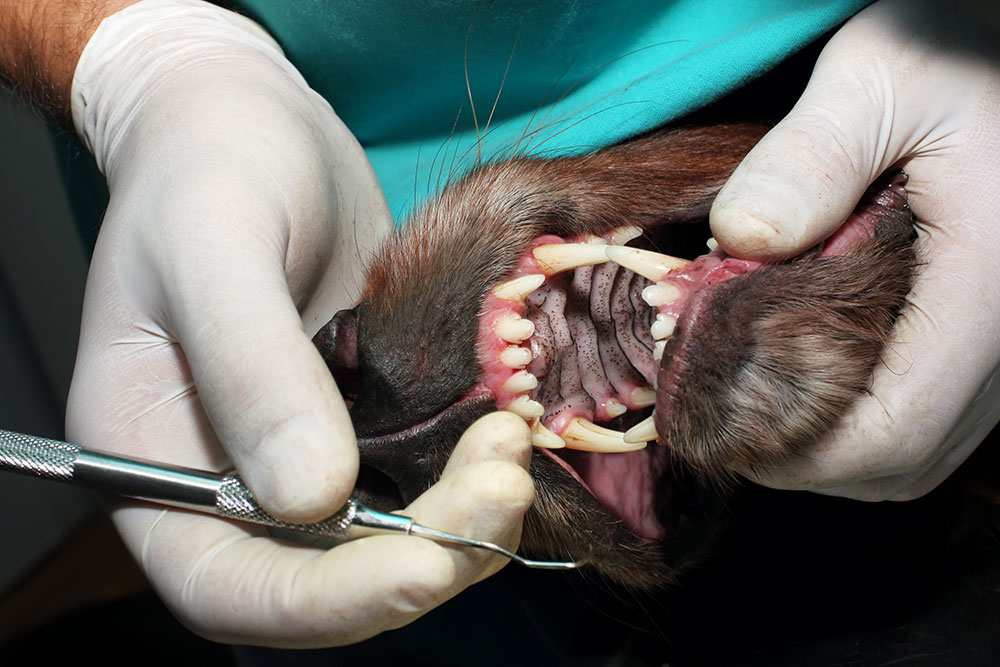Do Pets Need Anesthesia for Dental Care?

You probably understand that routine dental care is crucial to your furry pal’s health, but did you know that anesthesia needs to be used during pet dental procedures? Anesthetizing your pet allows the veterinary team to perform a thorough oral health assessment, treat any dental issues they find, and prevent stress and discomfort for your pet. Although you may be concerned about anesthesia, your veterinarian takes specific precautions to minimize your pet’s risks and ensure their safety.
Professional veterinary dental care versus anesthesia-free dentistry
The most recent AAHA dental guidelines state that anesthesia-free dentistry, a procedure that involves scaling a pet’s teeth with dental instruments while they are fully awake, is not acceptable because of safety, efficacy, and ethical concerns. Using sharp instruments in a pet’s mouth can be painful and confusing for them and requires excessive restraint, which can be dangerous and stressful for the pet and the veterinary team.
When anesthesia is used, pets don’t feel stress, fear, anxiety, or pain during their procedure. Anesthetized dental procedures allow for a complete oral exam, scaling above and below the gumline, tooth polishing, and extractions or other required treatments.
When anesthesia is not used and a pet is awake during a dental procedure, only tartar visible above the gumline can be removed. Your pet’s teeth may look cleaner after an anesthesia-free scaling, but only during an anesthetized procedure can your pet’s veterinary team treat, prevent, or reverse dental disease.
The argument for anesthesia during pet dental procedures
Most pets develop some degree of dental disease by the time they reach 3 years of age. When dental disease isn’t prevented or properly treated, it can progress to oral infections, pain, tooth loss, and organ damage in severe cases. The only way to accurately evaluate a pet’s oral health, treat existing dental disease, and prevent disease progression is to perform a comprehensive oral health exam and treatment while the pet is under general anesthesia.
Anesthesia allows your pet’s veterinary team to complete the following during a dental procedure:
- Complete oral exam — Anesthesia allows for a complete oral exam and measurement of any gaps between your pet’s gums and tooth surface.
- Full-mouth X-rays — Many dental problems begin below the gumline, where 60% of each tooth lies. Bone loss, root resorption, and abscess formation indicate that a tooth is diseased, yet these issues can easily be missed without an X-ray.
- Subgingival scaling — Removing plaque and tartar from below the gumline is critical in slowing dental disease progression, but can be done only when a pet is under anesthesia.
- Pain control — Poking and prodding during a dental exam can be painful, but anesthesia prevents any discomfort. It also prevents your pet from having a bad or painful experience at the veterinarian, which could cause them to become fearful about future veterinary visits.
- Dental treatments — When a pet is already anesthetized for their dental cleaning, the veterinary team can treat any problem teeth found during the oral exam, including extracting teeth that are too damaged to save.

Dental anesthesia safety for pets
Fear of anesthesia is the main reason pet owners decline or defer professional dental treatments for their furry pals. However, anesthesia administered by a well-trained veterinary team is extremely safe and poses minimal risks. To keep your pet safe, the veterinary team takes extra precautions, including:
- Preanesthetic testing — Blood and urine tests evaluate kidney and liver function, which can influence how your pet metabolizes anesthesia and other medications. Some pets may also require chest X-rays or a heart ultrasound to assess their cardiovascular function. If abnormalities are found, adjustments can be made to the anesthetic protocol.
- Preanesthetic exam — The veterinary team will check your pet’s vitals and listen to their heart and lungs the morning of surgery to check for any changes in your pet’s health since their last visit.
- Intravenous catheter placement — By placing an intravenous (IV) catheter, the veterinary team has direct access to a vein for rapid drug and fluid administration. IV access is also crucial for administering emergency drugs or drug reversals should your pet experience a complication.
- Preanesthetic sedation — A combination of drugs administered before surgery allows your pet to relax and prevents fear, which can cause them to form a negative association with the veterinary clinic.
- Endotracheal tube placement — A tube placed in your pet’s airway allows for delivery of oxygen and anesthetic gas and also protects their airway and lungs.
- Anesthetic monitoring — A dedicated veterinary team member monitors your pet’s vitals, adjusts anesthetic depth, and alerts the veterinarian to any changes in your pet’s health status during the procedure. Vitals monitored include heart rate and rhythm, pulse quality, mucous membrane color, oxygen saturation, temperature, blood pressure, expired carbon dioxide, and respiratory rate.
- Supervised recovery — After anesthesia, a team member will sit with your pet until their vitals are back to normal and they are resting comfortably in their kennel.
The risks associated with untreated dental disease are typically much greater than the minimal risks associated with anesthesia. AAHA does not recommend anesthesia-free dentistry, which can be physically and mentally harmful to your pet and does not allow for effective treatment of dental disease. For more information about dental disease, dental home care, and professional pet dental procedures, schedule a visit with your AAHA-accredited veterinary team.



